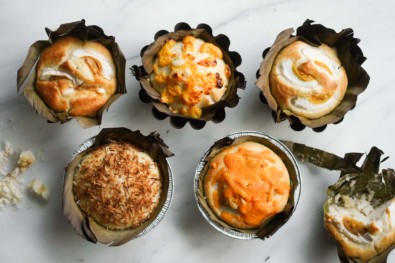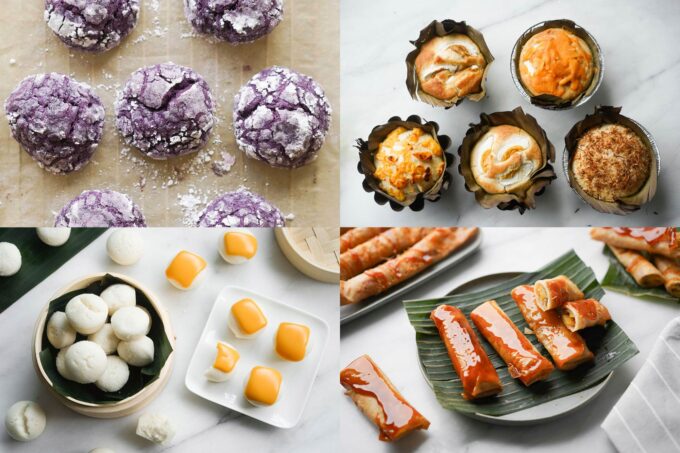
With a multitude of tasty flavors like rich coconut, vanilly pandan, nutty ube, and so much more–Filipino desserts are some of the most mouthwatering treats. While the ingredients have a lot of overlap with other Southeast Asian desserts like Vietnamese desserts and Chinese desserts, Filipino sweets have a distinct and delicious take.
Here are some of the best Filipino desserts you should know which includes traditional, as well as new creations. And of course, all of the desserts below have a link to recipes on this blog, with original photos!:
1. Ube Crinkle Cookies (Purple Yam Cookies)
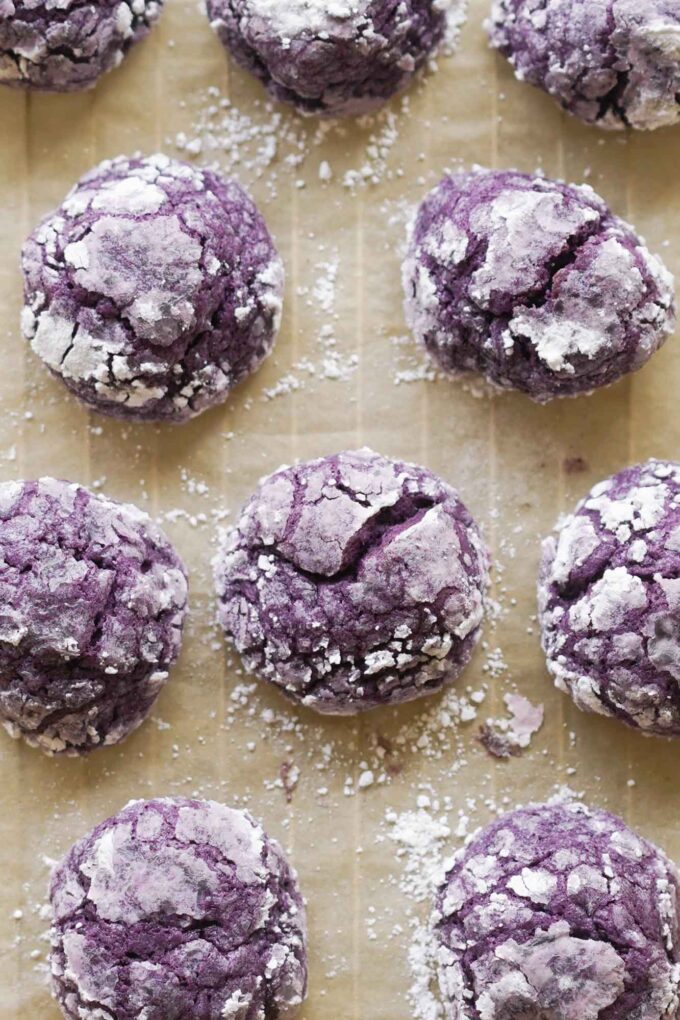
UBE. If you haven’t heard of this word, then you must be living under a rock for the past year. This native Filipino root is often mistaken for it’s cousins (taro and purple sweet potato), but it’s a violet colored purple yam that has nutty and vanilla notes of flavor. It’s paired with so many desserts, and cookies are no stranger.
These sweet and nutty crinkle cookies have a soft, but slightly chewy texture and are covered in powdered sugar. Ube crinkle cookies are a crowd pleaser because you can’t just eat one! What was once an American cookie took an unexpected Filipino twist when someone switched out chocolate for ube and we’ve never looked back.
2. Cassava Cake (Cassava Bibingka)
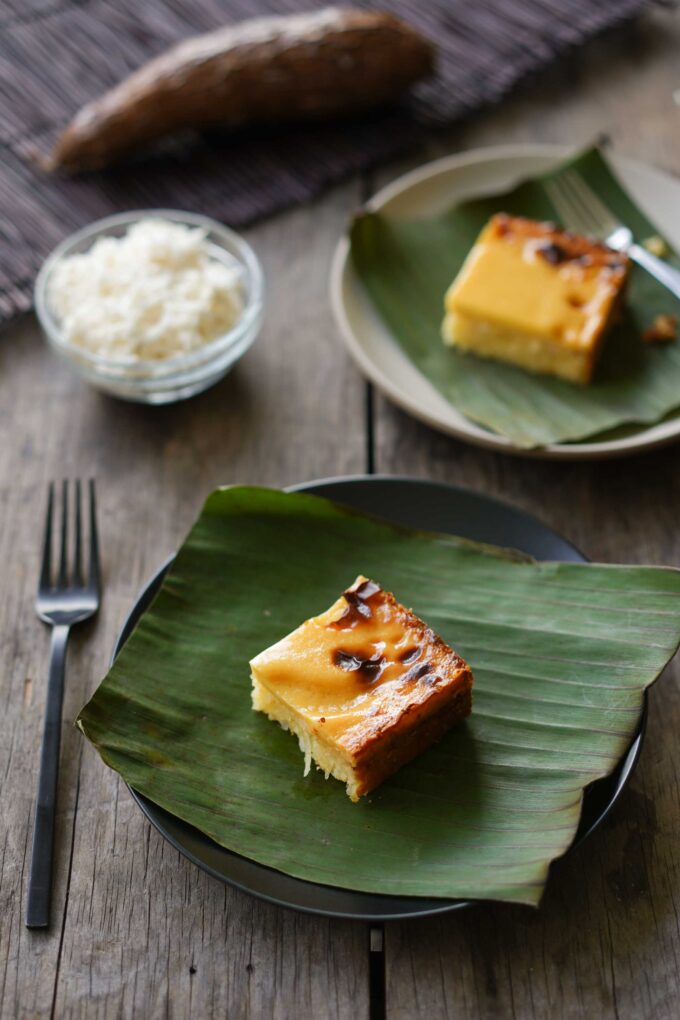
With a thick and moist layer of cake made of fresh cassava root, sweetened condensed milk & evaporated milk, and rich coconut cream–cassava cake is a Filipino party decadence, especially with it’s extra silky custard topping! Cassava cake is another type of dessert that incorporates a root vegetable, like ube. It’s also known in other names like yuca, manioca, and aipim across the world.
While cassava isn’t native to the Philippines, it was introduced via colonization by Spain in the 16th century. Cassava cake is a type of traditional rice baked cake (bibingka), which uses cassava root as it’s base instead of glutinous rice.
3. Taho (Silken Tofu w/ Sago Pearls & Syrup)
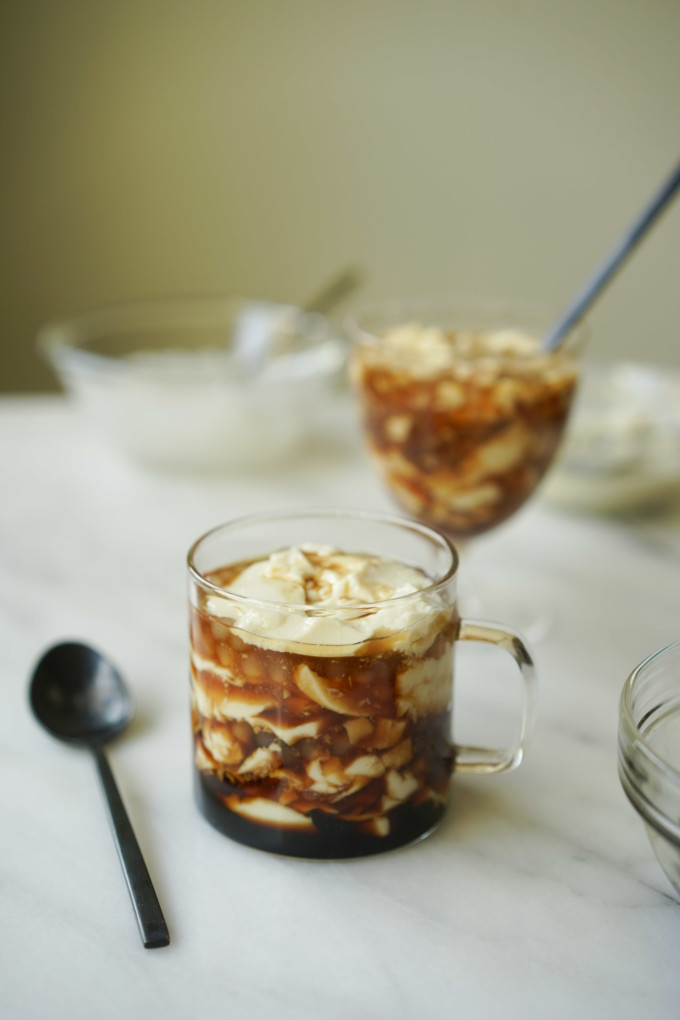
“Tahooo! Tahoo!” Clear memories of walking down the streets of Manila or Cebu and hearing the Taho man calling for us to eat this tasty snack at merienda. It’s a cup full of silky tofu pieces layered with sago pearls and sweet syrup called arnibal. Traditionally arnibal is a simple syrup made of water and sugar, but these days you can find ube, pandan, strawberry, and many more different flavors.
This traditional Filipino snack was originally introduced to the Philippines during pre-colonial times by Chinese migrants. Douhua is a similar Chinese snack made of soybean pudding and syrup. In Vietnam, they also have a different version that layers silken tofu with a syrup that is made with ginger called đau hũ nước đường. These days you can find taho on Filipino street carts, or make it at home if you’re living abroad.
4. Puto (Steamed Rice Cakes)
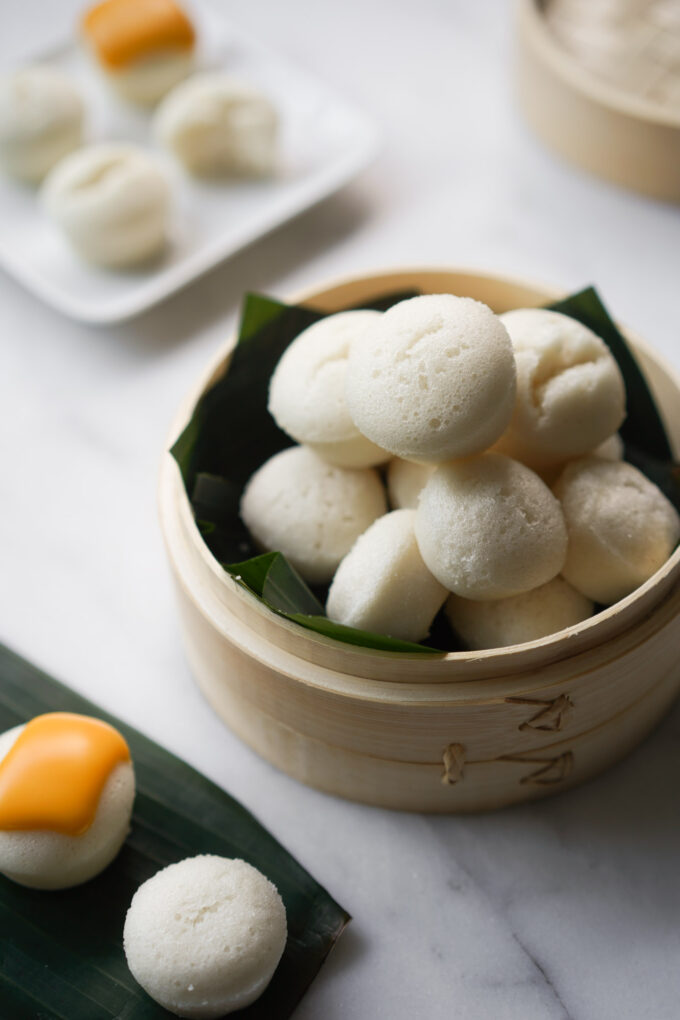
Puto is a traditional steamed rice cake in the Philippines and is often seen at Filipino parties in various colors like white, purple, green, and more. While it might seem a little odd to mix and match the words cake, cheese, or salted egg, it’s actually quite common to see these varieties of puto at your Filipino store or party.
These bite-sized kakanin (or “rice cake”), is named puto from the Malay word “puttu,” which means “portioned.” It’s named this because you often see puto steamed in mini muffin molds or cupcake molds. These are also extremely similar to Vietnamese bánh bò where it has a soft and spongy texture and is also made of rice flour.
You can find puto at stores like Seafood City or bakeries like Valerios Bakery or Goldilocks. My mom always made this at home and froze the leftovers for snacking on later.
5. Leche Flan (Classic Filipino Style Crème Caramel)
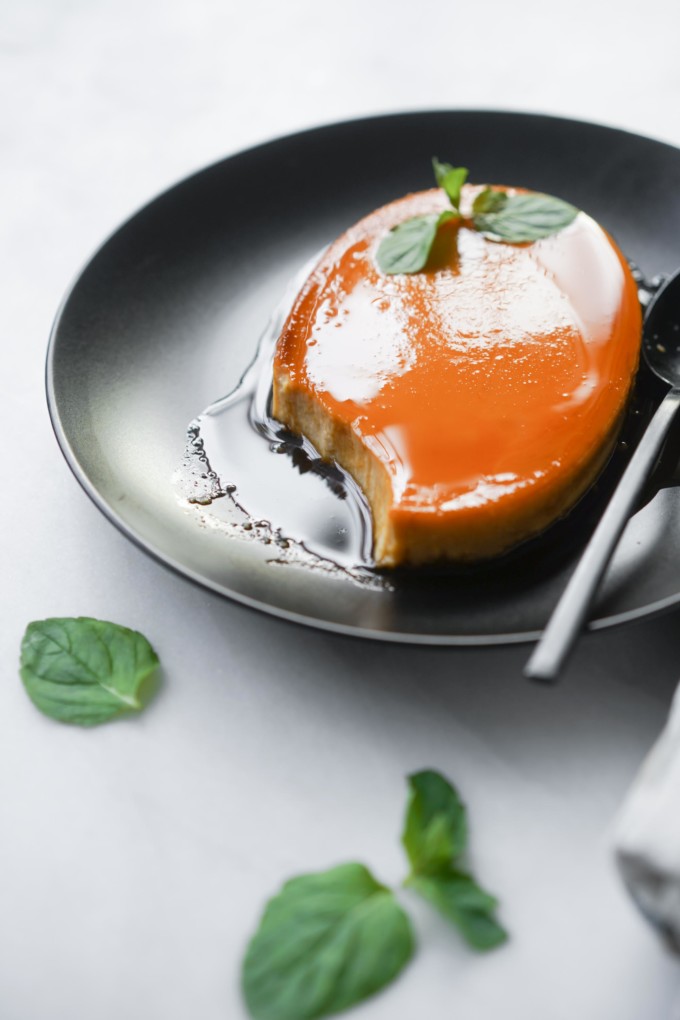
Leche flan isn’t native to the Philippines, but it’s definitely become a traditional dessert. Unlike its predecessor from Spain, Filipino leche flan is richer because it uses lots of egg yolks, condensed milk, and is steamed in the oven in oval llanera molds. Its texture is also a little bit jiggly because of the addition of milk.
One of my favorite aunts would always bring her special homemade leche flan to every family party. This ultra creamy and sweet creme caramel is often eaten by itself or added as a topping to halo halo, chiffon cake, or cheesecake. If you don’t have time to make this at home, you can also find premade leche flan at Seafood City and Goldilocks bakeries.
6. Bibingka (Baked Coconut Rice Cakes)
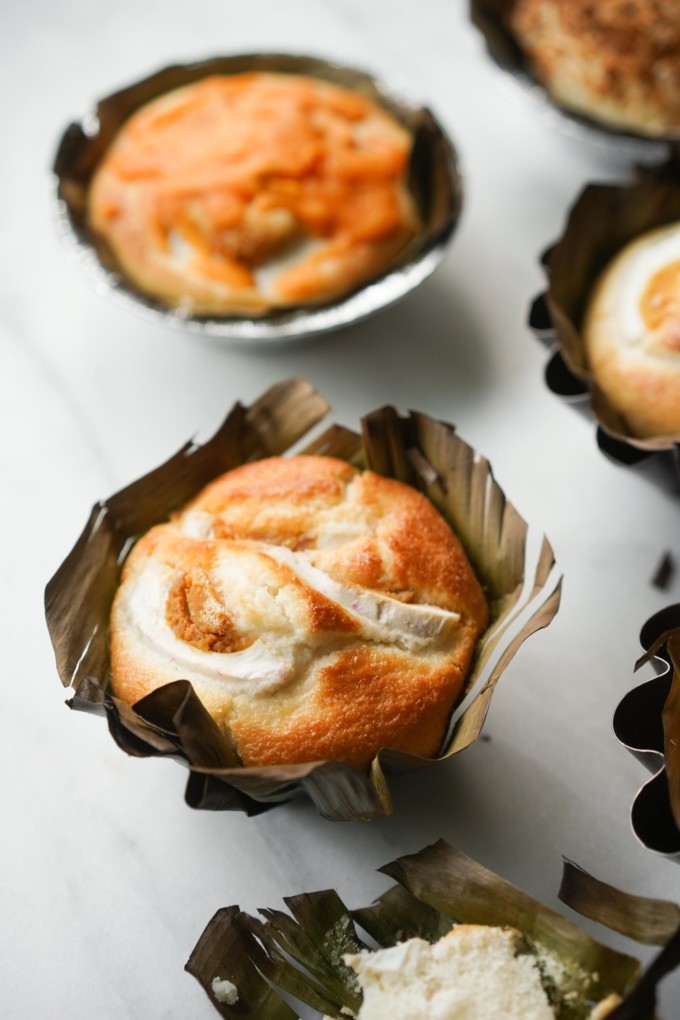
Bibingka is another type of kakanin (cake) like puto where it’s a rice cake, but this time it’s cooked in terracotta pots lined with banana leaves over coals (but if you’re making it at home, it’s easily baked in the oven). It’s got a sweet and soft texture and is often topped with cheese, salty duck egg slices, or fresh coconut.
Traditionally, bibingka is eaten during simbang gabi (or Christmas night mass) or generally during the Christmas season to celebrate. It’s often sold on the streets and you can grab a personal sized rice cake straight from the vendor.
If you want a homemade bibingka, it’s super easy to make at home with this recipe, but you can also purchase premade bibingka at your local Filipino grocery store or bakery.
7. Halo-Halo (w/ Leche Flan)
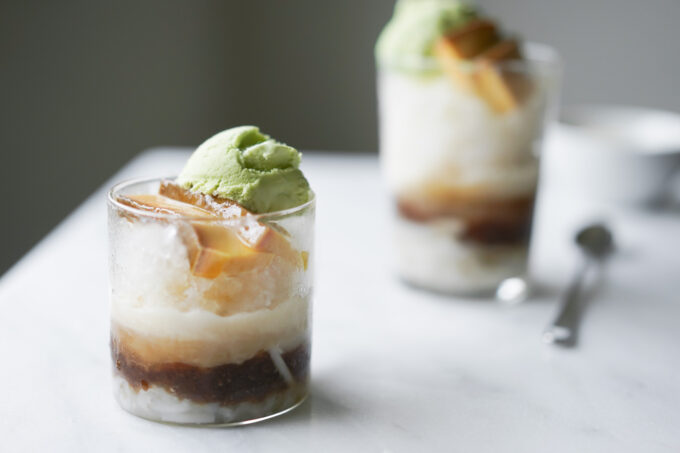
If you’ve ever been to a Filipino restaurant, then you must know about this famous dessert called Halo Halo. Traditional versions of halo halo include many types of coconut macapuno strings, palm jellys, sweet red bean, coconut jellies, ube halaya, ice cream toppings, and many more ingredients.
This shaved ice treat was actually influenced by Japanese migrants who introduced kakigori (a Japanese shaved ice dessert) in 20th century Philippines. In Tagalog, the name halo halo means “mix mix” and is similar to the abundance of repetitive terms in many Filipino languages. But it’s also a hint at what you’re supposed to do with this dessert–you mix!
My favorite version of halo halo is actually from a restaurant called Razon’s of Guagua. It’s a much simpler dessert with layers of shaved ice, caramelized banana sauce, coconut strings, evaporated milk, and topped with leche flan. While this version may be hard to find in the US, you can easily make halo halo at home.
8. Ube Halaya (Purple Yam Jam)
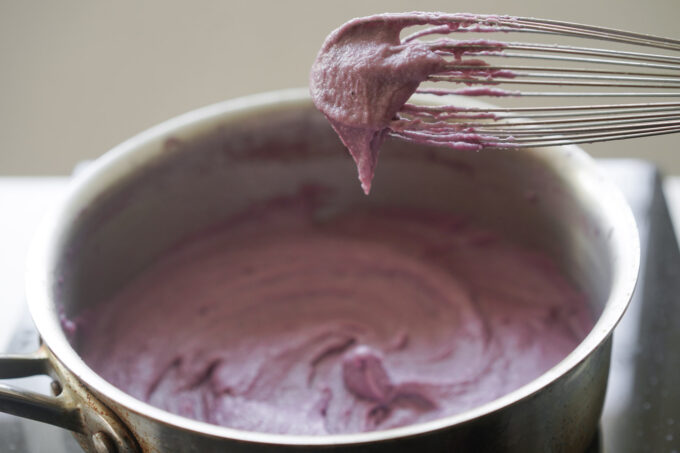
Ube halaya is quite simply an ube jam (and otherwise known as “haleyang ube” in Tagalog). Like jams in the US, you can eat it as it is or use it as an ingredient for other desserts like ube crinkle cookies or ube cake. It’s got a nutty, vanilla taste and is often made with fresh ube (or dehydrated powder), condensed milk, evaporated milk, and other ingredients.
While you can find ube halaya premade in preserved jars at grocery stores like Seafood City, you can also find them made fresh in the refrigerator aisle. It’s often shaped in an oval or square and looks almost like a solid jello.
When I have time, I like to make my own ube halaya with fresh ube or even dehydrated ube powder. Sometimes the preserved ube jars include additional preservatives and artificial coloring that I try to not eat. When you make it at home, you can also adjust the sugar content to your liking.
9. Ube Cake (Filipino Purple Yam Cake w/ Macapuno)
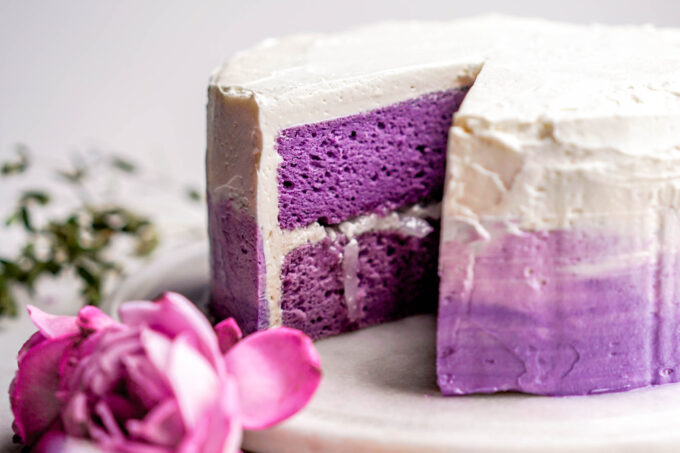
If you’ve ever been to a Red Ribbon or Goldilocks bakery, then you’ve seen the infamous purple cake known as ube cake. It’s often made from layers of ulta-moist ube chiffon cake, coconut macapuno filling, and a sweet buttercream icing. You can find it in the shape of a regular round cake, sheet pan, or most popularly, a roll cake.
If you’re feeling ambitious about your next ube dessert, this ube cake recipe is definitely not for the faint of heart, but your tastebuds will appreciate it!
10. Turon (Banana Lumpia w/ Caramel)
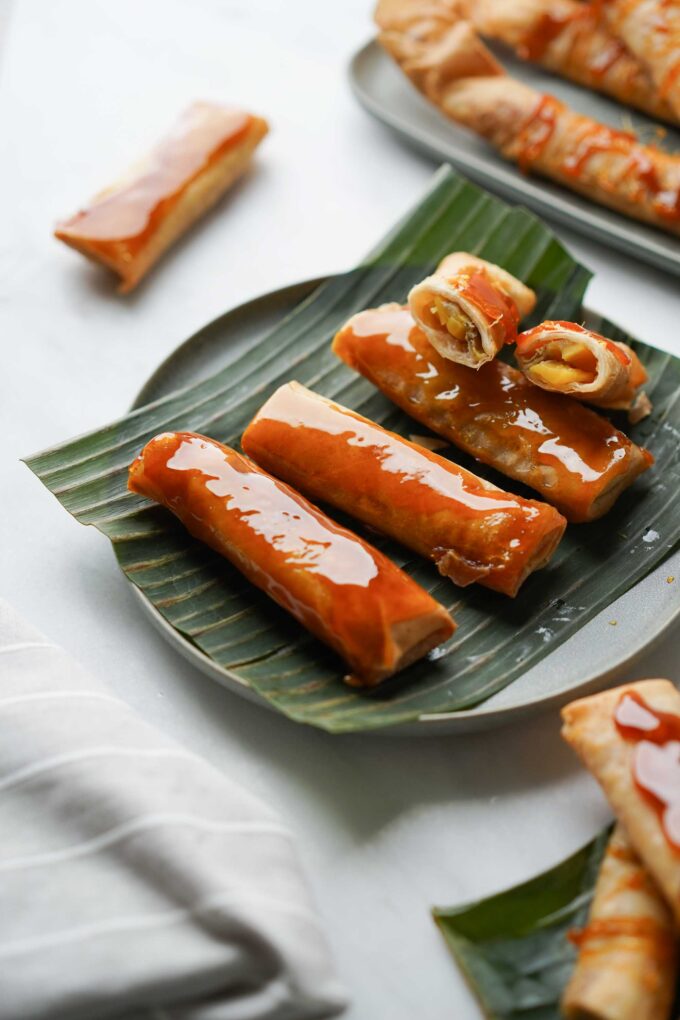
Turon does not need an introduction to any Filipino dessert lover, but these deep fried dessert spring rolls are a beloved FIlipino treat. Tender saba bananas and fresh jackfruit slices rolled in an ultra crispy wrapper and topped with sweet caramel sauce–need I say more?
Otherwise known as banana lumpia, you can easily find these at your local Filipino restaurant, like Salo Salo Grill, or cafe if you’re not already at a Filipino party next to a tray full of deep fried goodness. I love frying turon at home because it’s super fresh and extra crispy.
11. Champorado (Filipino Chocolate Rice Pudding)
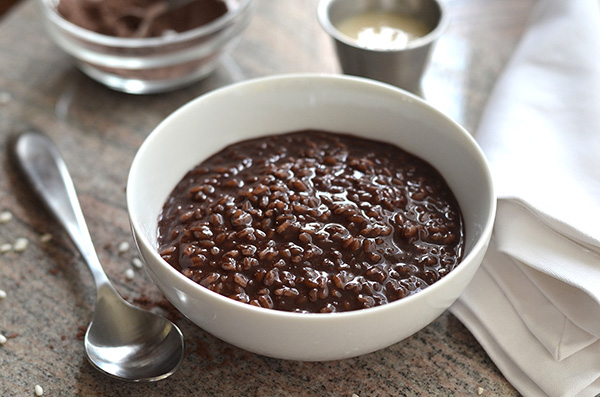
Rainy, overcast days are my favorite days to enjoy sweet and chocolatey champorado on the couch. It’s as simple as describing it as chocolate rice pudding, but it’s a big comfort food in the Philippines and many US Filipinos.
It’s originally influenced by its Mexican cousin of a similar name, champurrado, except that it’s more of a pudding than a hot chocolate drink. Different regions have their own spin on champorado, but it’s typically made with boiling glutinous rice over the stove and adding sugar and tableas (tablets made of pure cocoa).
Since this is mainly an at home, comfort food, it’s not usually offered at restaurants. If you ever feel a craving, this is a super easy champorado recipe to make at home, too.
12. Biko (Sweet Rice Cake w/ Latik Topping)
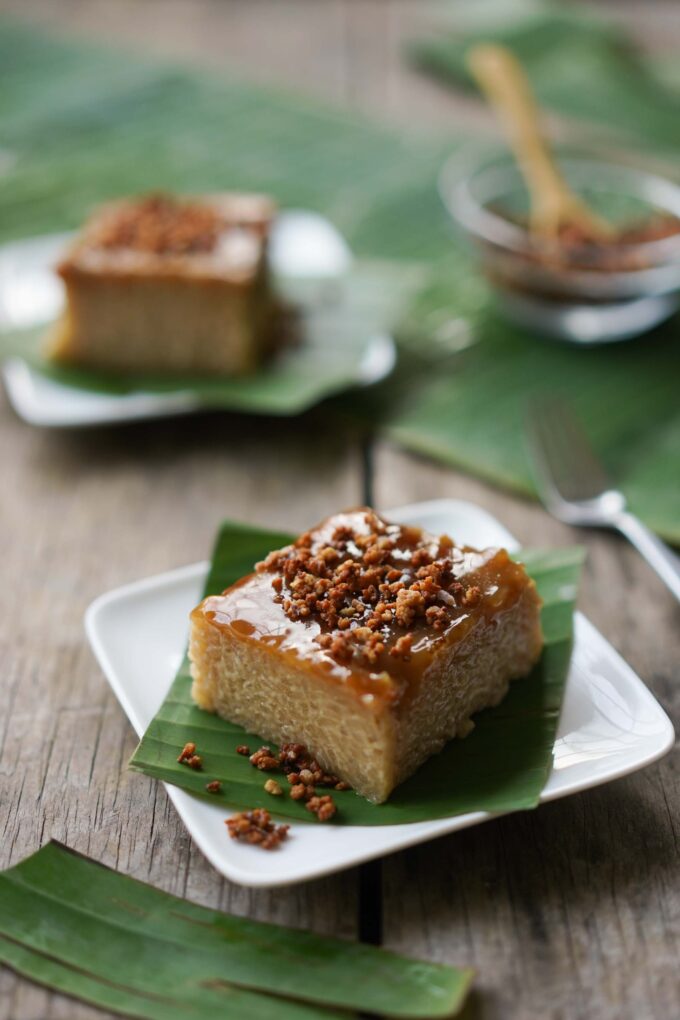
The variety of sweet, sticky rice cake desserts from the Philippines knows no bounds and biko (especially with a latik topping) is one of the heavy hitters on the dessert table. This extra decadent rice cake is made of rich coconut milk, brown sugar, palm sugar, and glutinous rice. It’s also topped with a caramelized coconut sauce and latik (crispy coconut curds) for even more texture.
I like to make my biko at home a day ahead of an upcoming party so it has time to set, buf if you don’t have time you can always purchase it at a Filipino bakery nearby, like Valerios.
13. Ginataan Bilo Bilo (Rice Balls, Sweet Potato & Coconut Dessert)
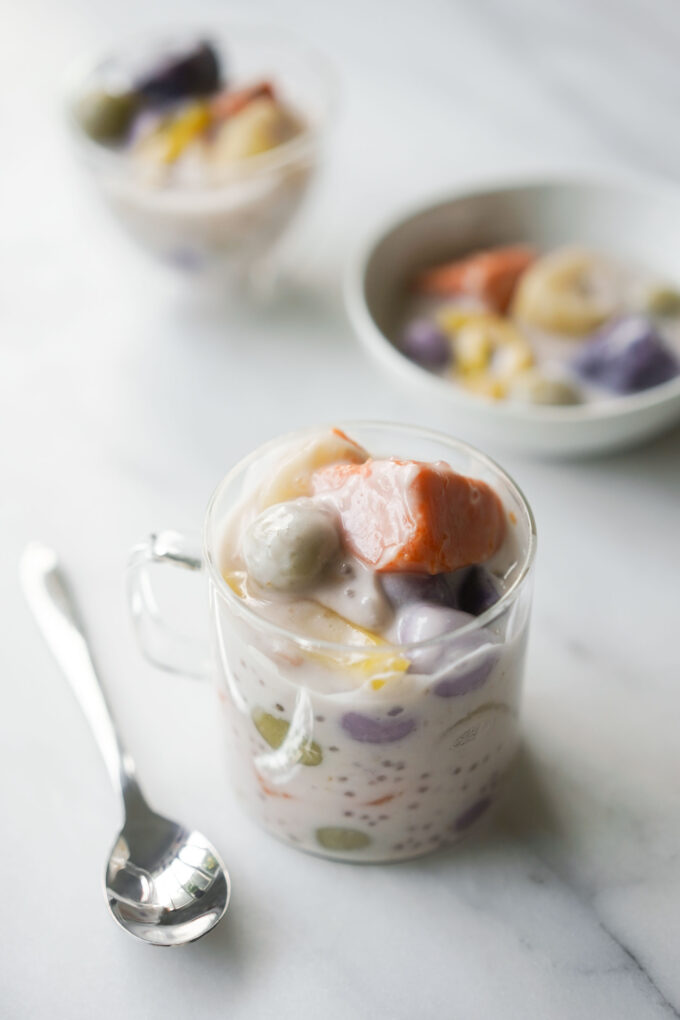
Dessert soup might not be familiar to Americans, but it’s a whole genre of desserts for many Asian cultures, like Filipino desserts. Ginataan bilo bilo is a sweet soup that is made of tender sweet potatoes, juicy jackfruit, and homemade chewy bilo bilo pearls mixed in a sweet and nutty coconut sauce.
The name ginataan means “cooked in coconut milk” in Tagalog, while the word bilo means “round,” which reflects their bulbous shape. Ginataan bilo bilo is a sweet dessert, but it’s also worth noting that there are also savory ginataan dishes too!
If you don’t have time to prep all the ingredients, grocery stores also sell premade packets of ginataan bilo bilo to make it easier for you. Like champorado, ginataan bilo bilo is a sweet comfort food that I love eating at home so I try to make it from scratch because you can adjust the types of ingredients and sweetness level.




